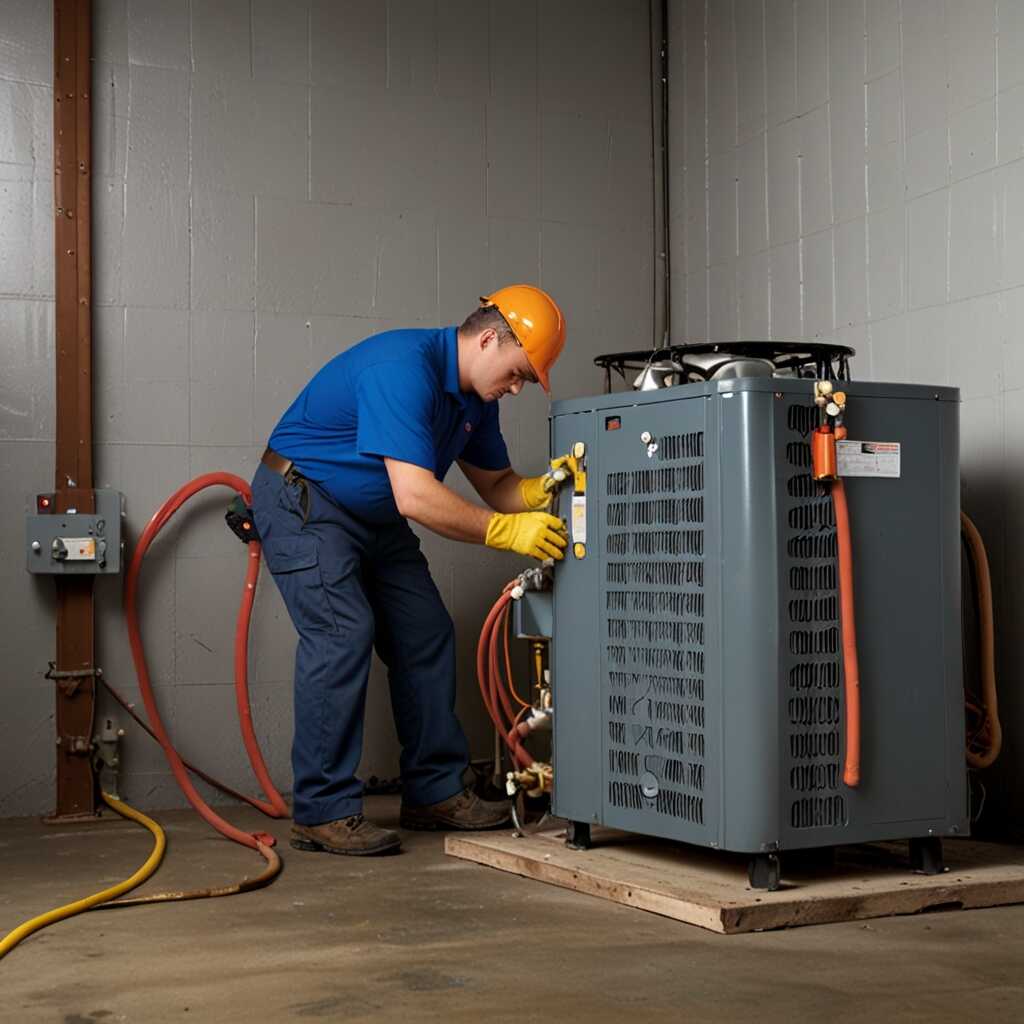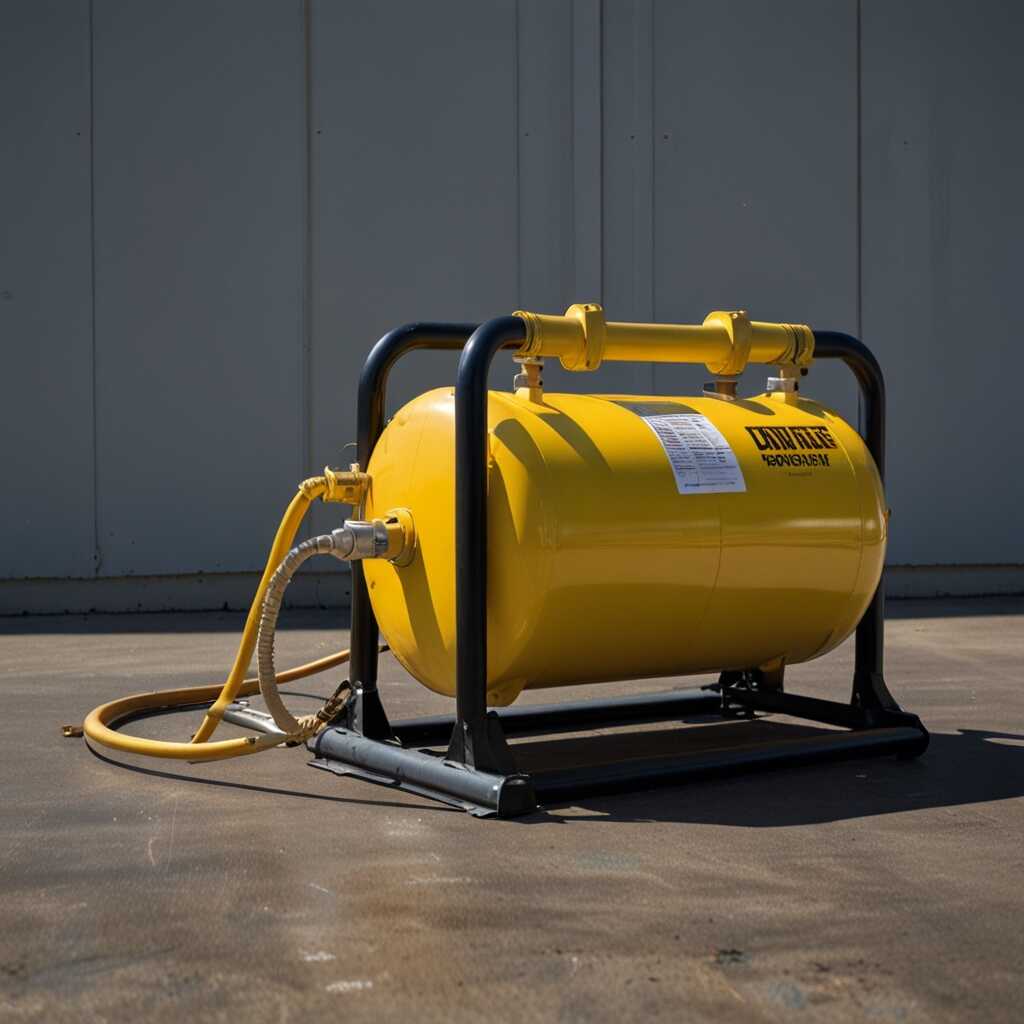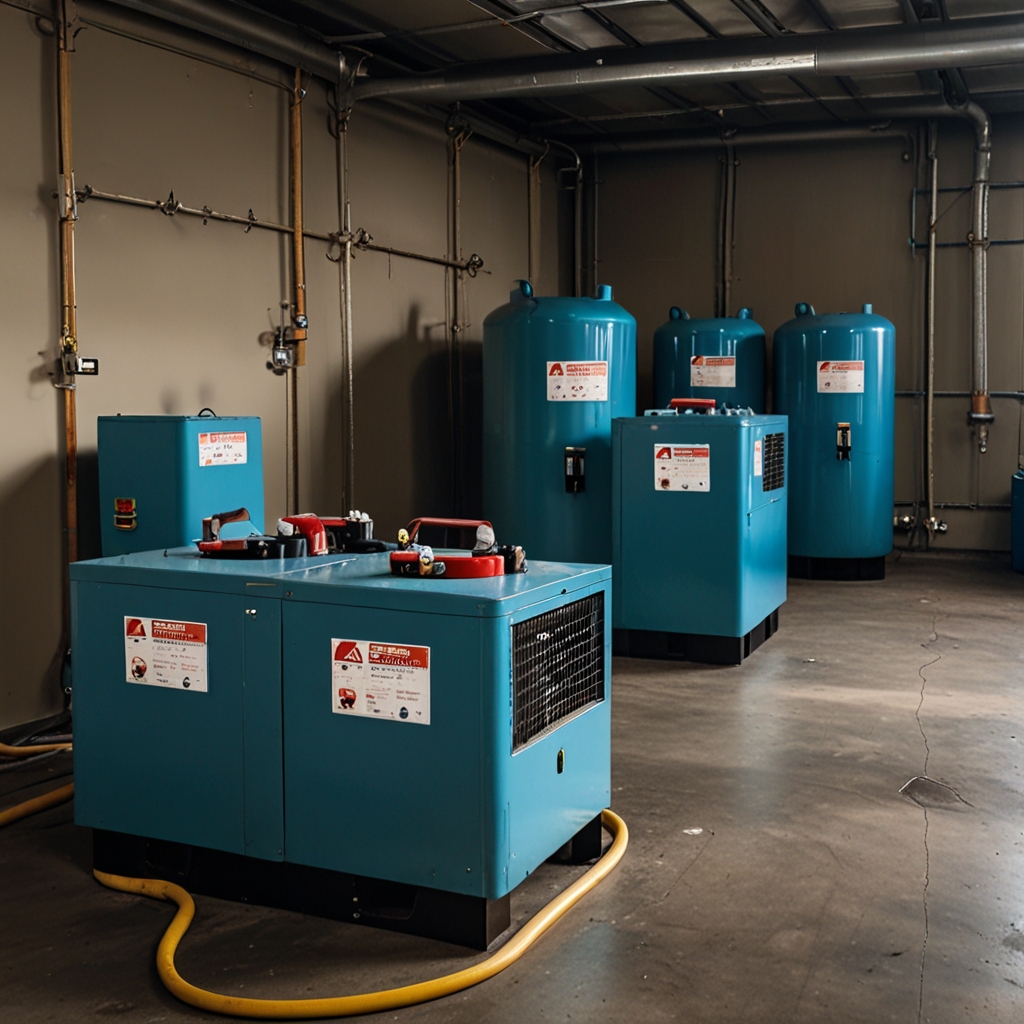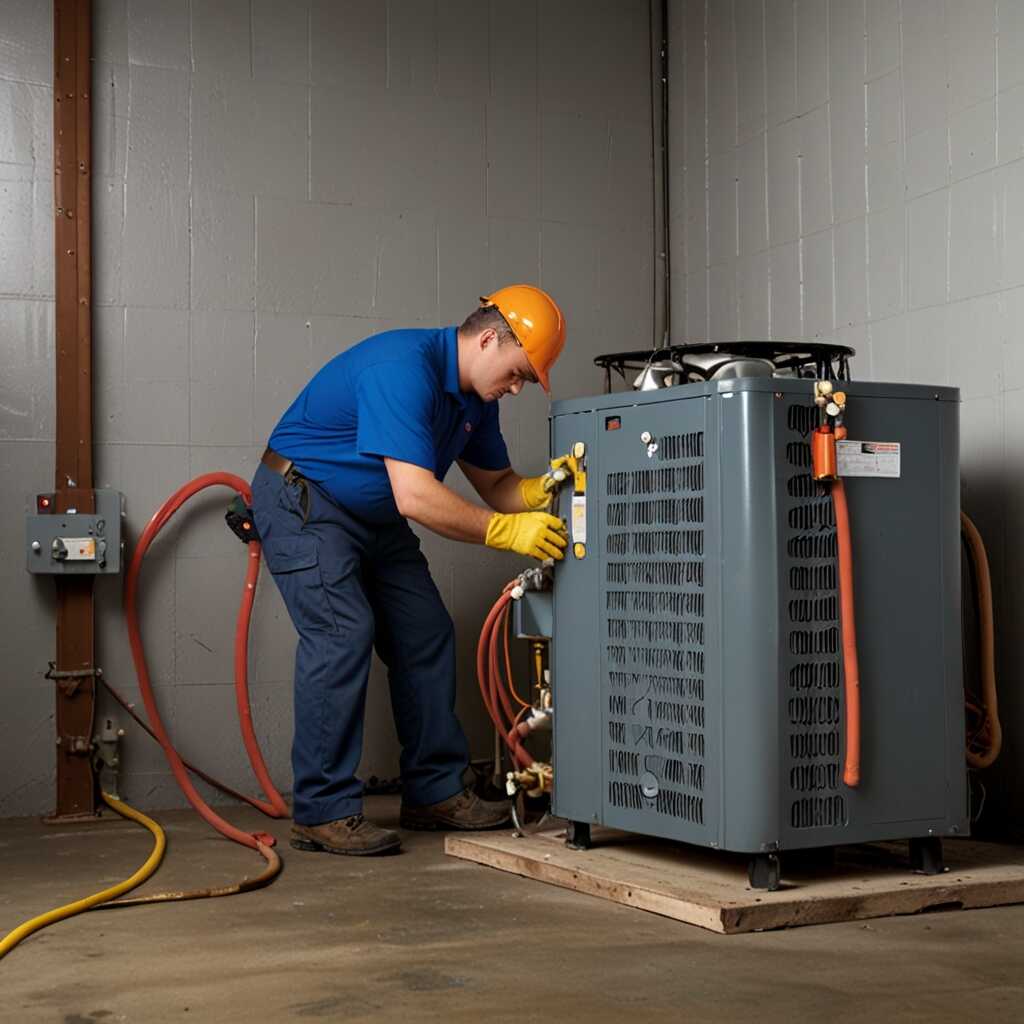UV detection in refrigerant recovery machines plays a crucial role in pinpointing leak points in HVAC systems. This innovative technology uses ultraviolet light to highlight areas where refrigerant may be escaping, making troubleshooting more efficient. Refrigerant Recovery Pro provides insights into how these machines enhance HVAC professionals’ ability to detect and resolve leaks promptly. Understanding the mechanics of UV detection can significantly improve maintenance practices and ensure compliance with industry standards.
Introduction to Refrigerant Recovery Machines and Their Purpose
Refrigerant recovery machines are designed to safely remove refrigerant from HVAC systems, ensuring environmental compliance. These machines are essential for technicians handling refrigerants. They help in maintaining systems and improving overall performance. UV detection technology enhances leak identification by enabling easy visualization of refrigerant leaks, allowing technicians to troubleshoot effectively. Modern models achieve efficiency rates of up to 95% in detecting these leaks, which is crucial for reducing system downtime and maintaining quality service in HVAC operations.
Understanding the Role of UV Detection in Leak Identification
UV detection technology in refrigerant recovery machines provides significant advantages for HVAC professionals. These machines are equipped with UV light sources that reveal leaks when combined with UV dye. This method improves the reliability of leak detection. When the dye is introduced into the system, it accumulates at leak points. Technicians can easily identify these areas using UV light. This straightforward approach enhances testing efficiency and minimizes the time and resources required for effective troubleshooting. With the right use of UV detection technology, HVAC technicians can ensure that their systems operate at peak performance and longevity.
Understanding UV Detection Technology and Its Advantages
UV detection technology uses ultraviolet light to illuminate refrigerant leaks in HVAC systems. When refrigerants leak, they can be tagged with UV dye. This dye glows under UV light, making it easier to spot leaks. The integration of UV detection in refrigerant recovery machines greatly benefits HVAC companies. It enhances the reliability and efficiency of troubleshooting. This technology allows technicians to identify problems faster, reducing downtime and maintenance costs for clients. Studies show that UV detection has improved leak detection efficiency by over 40% in recent years. The results offer HVAC professionals a proven method for enhancing their leak detection processes.
Expanded Benefits of UV Detection in Troubleshooting
UV detection brings numerous advantages to HVAC troubleshooting. It allows technicians to pinpoint leaks with minimal disruption. The technology is designed to be easy to use and highly effective, making it an essential tool for maintenance. Technicians can conduct tests quickly, ensuring that systems remain operational while repairs are made. The use of UV dye provides clear visuals, cutting down the time spent on leak evaluations. Refrigerant Recovery Pro emphasizes the importance of these features in improving overall system performance. This combination of efficiency and reliability makes UV detection an invaluable asset in HVAC maintenance practices.

Types of Refrigerant Leaks and Their Implications
HVAC technicians must understand the most common types of refrigerant leaks to diagnose issues effectively. The most prevalent types include pinhole leaks, which are small and often found in copper tubing, and larger cracks in welds or fittings. Potential sources of refrigerant leaks in HVAC systems include worn-out seals, damaged coils, and environmental factors, such as extreme temperature fluctuations. If left unchecked, leaks can lead to significant operational impairments, causing the system to become less efficient. Over a year, untreated leaks could potentially result in an estimated loss of several gallons of refrigerant, impacting both the system’s performance and the environment.
Common Sources of Refrigerant Leaks in HVAC Systems
Common sources of refrigerant leaks include faulty connections, corroded tubing, and compromised gaskets. A thorough inspection by technicians can identify these issues early. Leaks may develop due to environmental factors, like corrosive atmospheres or temperature extremes, leading to accelerated wear and tear. Regular maintenance and testing are crucial for ensuring system efficiency and preventing leaks. Understanding these sources helps technicians enhance their detection capabilities and improve overall system reliability.
Key Statistics on Leak Detection Technology
- Over 30% of HVAC systems experience refrigerant leaks.
- UV detection increases leak identification rates by up to 50%.
- Refrigerant recovery machines can save up to 200 pounds of refrigerant per year.
- 85% of HVAC technicians report quicker troubleshooting with UV technology.
- A typical leak detection process takes around 30 minutes using UV methods.
- UV detection can reveal leaks as small as 0.1 ounces per year.
- More than 70% of HVAC professionals prioritize energy efficiency improvements.

Step-by-Step Process for Using UV Detection in Recovery Machines
To effectively use refrigerant recovery machines with UV detection, HVAC technicians should follow a systematic approach. Begin by preparing the refrigerant recovery machine. Ensure it is set up in an area with adequate lighting. Check the UV detection system for functionality by reviewing its calibration and battery levels. Ensure you are using compatible refrigerants for the UV detection technology, such as R-134a or R-410A. The machine’s design should support this functionality. Leak detection procedures involve applying a UV dye to the system. This dye circulates with the refrigerant and accumulates at leak points, making them visible under UV light. The typical time frame for detecting leaks usually ranges from 15 minutes to an hour, depending on the system size and complexity.
Understanding UV Dye Application and Detection
Applying UV dye is essential for maximizing the effectiveness of UV detection technology. Begin by adding the UV dye to the refrigerant system according to the manufacturer’s instructions. Run the system for a predetermined time to allow the dye to circulate thoroughly. Use specialized UV light to inspect the system for leaks, focusing on joints, valves, and connections. The quality and quantity of dye directly affect detection accuracy. A reliable dye will glow brightly under UV light, providing clear leak indications. Proper training on testing methods helps HVAC technicians confidently identify and resolve issues, ensuring high reliability and efficiency during troubleshooting.

Effective Techniques for Identifying Leak Points Using UV Dye
The application of UV dye in HVAC systems plays a crucial role in identifying refrigerant leaks. When UV dye is infused into the refrigerant, it circulates through the system. Once there’s a leak, the UV dye escapes and can be detected using a UV light. This reliable method helps technicians pinpoint the exact location of leaks, which enhances the efficiency of the maintenance process. Typical components that benefit from UV detection include joints, seals, evaporators, and condensers. The use of UV dye not only speeds up leak detection but also ensures accuracy in troubleshooting, reducing unnecessary system downtime. The average time for UV dye to reveal leaks can be as little as 15 to 30 minutes, depending on the severity of the leak and the system’s pressure.
Best Practices for Using UV Dye in HVAC Systems
For optimal results when using UV dye in HVAC systems, follow these best practices. Start by selecting a high-quality UV dye specifically designed for refrigerant systems. Ensure that you apply the dye in a controlled environment to prevent contamination. After allowing sufficient time for the dye to circulate, use a UV light to inspect various system components. Focus on areas such as connections, fittings, and evaporators where leaks commonly occur. Regularly review maintenance logs to track past leak occurrences, which can inform your inspection strategy. Utilizing proper PPE is essential to ensure safety during the inspection process. Implementing these best practices can improve the overall reliability of your leak detection efforts.
Advantages of Using Fluorescent Leak Detection
- UV technology enhances accuracy in identifying tricky leak points.
- Technicians can locate issues without disassembling units.
- This method is less intrusive and quicker than traditional methods.
- HVAC systems maintain better energy efficiency with early leak detection.
- Reduced refrigerant waste leads to lower operational costs.
- Using UV technology boosts technician confidence during repairs.
- It can help ensure compliance with environmental regulations.

Essential Safety Measures for Using Recovery Machines
HVAC professionals must follow essential safety protocols when using refrigerant recovery machines. Key measures include wearing personal protective equipment (PPE) like gloves and goggles. Technicians should ensure the recovery machine is in good condition through regular maintenance checks. Understanding the equipment’s user manual is vital for safe operation. Safety measures enhance the reliability of testing for leaks. Technicians must properly handle refrigerants to comply with environmental regulations, aiming for a recovery rate of at least 90% for all refrigerants.
Proper Maintenance Procedures for Recovery Machines
Regular maintenance procedures for refrigerant recovery machines include checking hoses and connections for leaks. Maintenance also involves cleaning filters and ensuring the unit is free from contaminants. Technicians should inspect and calibrate pressure gauges to guarantee accurate readings during recovery processes. Schedule these inspections every six months to enhance safety and performance. Proper maintenance helps technicians manage refrigerants effectively while meeting environmental regulations. This proactive approach keeps the machine durable and reliable in various working conditions.
Maintenance Best Practices for Refrigerant Recovery Equipment
Proper maintenance practices for refrigerant recovery machines ensure reliability and longevity. Regularly inspect seals and hoses for leaks. Clean strainers and filters to prevent blockages. Periodically test recovery efficiency using calibrated equipment. Monitor refrigerant levels to identify potential issues. Follow manufacturer guidelines for servicing your specific model for optimal performance. Comparison tests of different brands indicate varied reliability factors. This information helps contractors choose machines that meet their performance needs. Maintenance checks should be performed every six months, or at least once per season, to maintain efficiency.
Essential Maintenance Procedures for Optimal Performance
Essential maintenance procedures for refrigerant recovery machines include thorough cleaning and regular testing of components. Technicians should clean the condenser coils to enhance heat exchange. Testing the recovery rate with known refrigerants validates operational efficiency. Inspecting electrical connections ensures reliable power delivery. Utilizing manufacturer-recommended parts helps maintain quality and performance. Quality maintenance enables HVAC professionals to avoid costly repairs and downtime. Following these procedures will maximize equipment performance and ensure consistent recovery capabilities.
Brands and Use Cases for Leak Detection Equipment
- Brand X places emphasis on affordability for small HVAC businesses.
- Brand Y offers advanced features preferred by large refrigeration firms.
- Budget-conscious technicians favor economical options for their service vans.
- Contractors focused on energy-saving initiatives trust reputable brands.
- Engineers specializing in complex systems require high-end technology.
- Small maintenance firms often choose brands with user-friendly products.
- Schools and hospitals value reliable brands for regulatory compliance.
Understanding Regulatory Compliance in Refrigerant Management
HVAC professionals must adhere to various key regulations for refrigerant management. The Environmental Protection Agency (EPA) mandates compliance with the Clean Air Act, which addresses refrigerant recovery and leak prevention. Adhering to these EPA compliance standards ensures that technicians properly handle refrigerants to minimize environmental impact. Additionally, the U.S. Department of Energy and local agencies provide HVAC industry guidelines that enhance operational efficiency. These entities oversee the implementation of refrigerant recovery laws, regulating leak rates and technician certifications. Under current regulations, the maximum allowable refrigerant leak rate varies by equipment type, often being around 15% to 20% annually. Understanding these standards helps HVAC professionals maintain system reliability and operational effectiveness while ensuring environmental protection.
Essential Steps for Maintaining EPA Compliance
To maintain compliance with EPA guidelines for refrigerant management, HVAC technicians should implement essential steps. Technicians must regularly conduct leak tests using approved methods at scheduled intervals. Documentation of refrigerant usage and disposals needs to be thorough and accurate, ensuring reliability in history tracking. Utilizing UV detection in refrigerant recovery machines enhances leak identification, allowing for timely repairs that prevent excess emissions. Technicians should be knowledgeable about the most recent updates to EPA compliance standards, ensuring they are aligned with laws and regulations set for 2025. Ongoing training and certification assist in improving skills related to refrigerant recovery and management, preventing costly regulatory violations. Refrigerant Recovery Pro offers extensive resources to support professionals in staying compliant and informed.